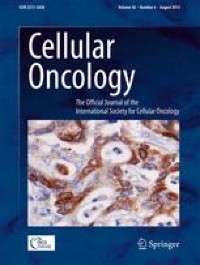Abstract
Purpose
Cervical cancer remains a major cause of cancer-related death in women, especially in developing countries. Previously, we found that the acetylation levels of chloride intracellular channel 1 (CLIC1) at lysine 131 were increased in cervical cancer tissues using a label-free proteomics approach. The aim of this study was to further determine the role of CLIC1 expression and its acetylation in cervical cancer.
Methods
CLIC1 expression and its implications for the prognosis of cervical cancer were analyzed using primary patient samples and cells, and the Gene Expression Profiling Interactive Analysis (GEPIA) database (gepia.cancer-pku.cn). The effect of CLIC1 on cervical cancer cells was evaluated using Cell Counting Kit (CCK)-8, flow cytometry, scratch wound healing, transwell, Western blotting and co-immunoprecipitation (Co-IP) assays. In vivo tumor growth was assessed using mouse xenograft models.
Results
We found that CLIC1 expression was increased in cervical cancer tissues and cells and that patients with a high CLIC1 expression tended to have a shorter overall survival time. Knockdown of CLIC1 significantly reduced in vitro cervical cancer cell proliferation, migration and invasion, and in vivo tumorigenesis. At the molecular level, we found that nuclear factor kappa B (NF-κB) activity was positively regulated by CLIC1. Pyrrolidine dithiocarbamate (PDTC), an inhibitor of NF-κB, attenuated the tumor-promoting effect of CLIC1. Moreover, we found that CLIC1 acetylation at K131 was upregulated in cervical cancer cells, which stabilized CLIC1 by inhibiting its ubiquitynation. Substitution of K131 inhibited CLIC1 ubiquitynation and promoted in vitro cervical cancer cell proliferation, migration and invasion, and in vivo tumor growth. In addition, we found that acetyltransferase HAT1 was responsible for CLIC1 acetylation at K131.
Conclusion
Our data indicate that CLIC1 acts as a tumor promoter in cervical cancer, suggesting a potential treatment strategy for cervical cancer by regulating CLIC1 expression and/or acetylation.



Δεν υπάρχουν σχόλια:
Δημοσίευση σχολίου
Σημείωση: Μόνο ένα μέλος αυτού του ιστολογίου μπορεί να αναρτήσει σχόλιο.